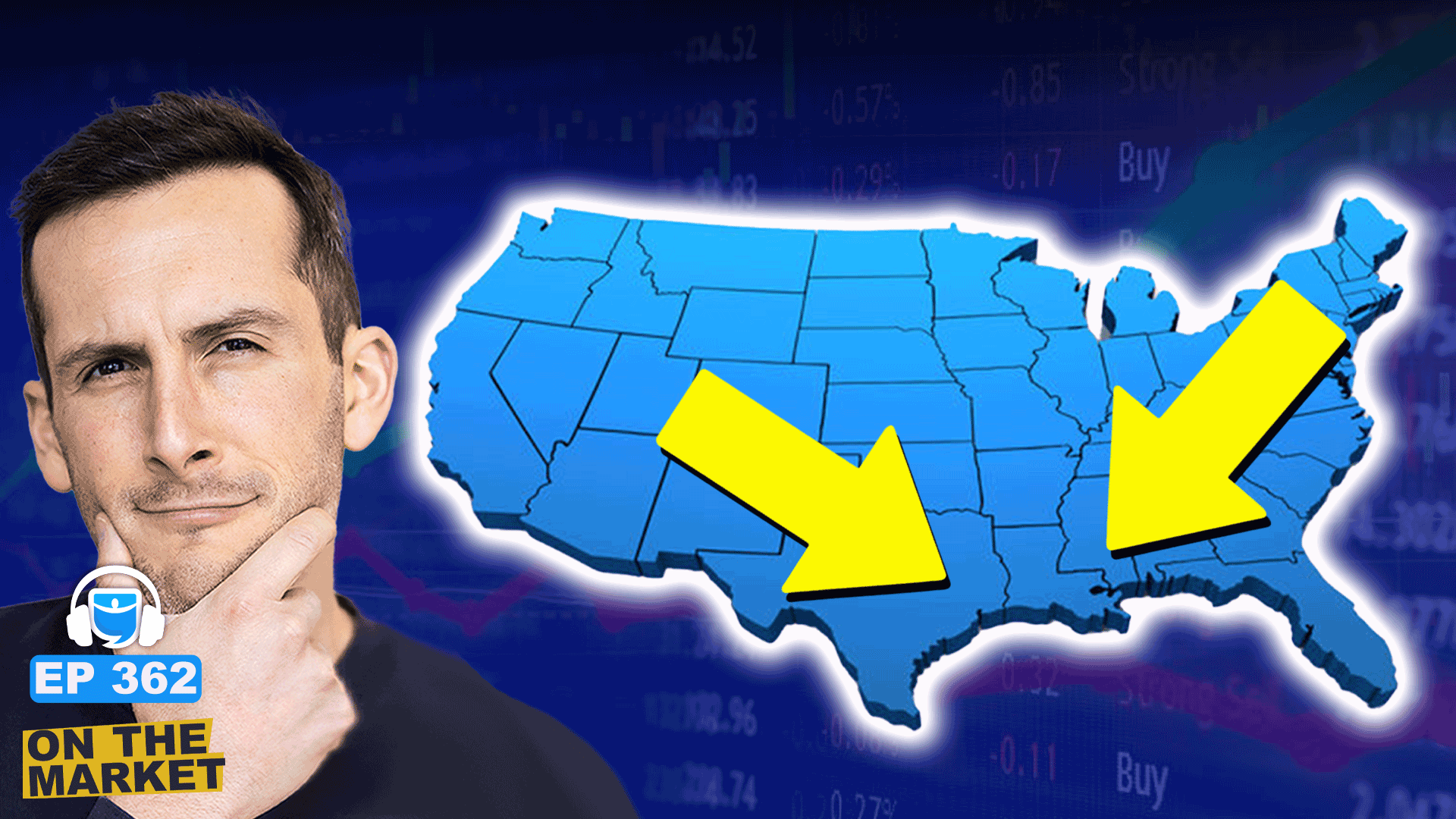Before the Civil War, the US financial markets operated in a world far removed from today’s fast-paced trading floors. Auctions were held only twice daily and newspapers served as a primary source of trade reports. Understanding these early market behaviors, from the rise of railroads to the impact of the Panic of 1837, sheds light on the risks and opportunities that shaped the foundation of today’s financial systems.
This historical narrative uncovers lessons crucial for modern analysts navigating an ever-changing landscape. It is the final in a three-part series (Part I, Part II).
Step Back in Time
When we go back in time before the Civil War, the stock market appears very different from today. There was exchange trading, but there was no specialist at a post, nor was trading continuous. Rather, auctions were held twice a day. The names of listed stocks were called in turn. The announcer paused to see if a bid or an ask, or more than one, was shouted out, and if any were matched they were recorded in the books as a trade.
Most stocks did not trade every day in this era. When the offers ceased to be shouted or in the absence of any offers, the announcer continued down the list to the next stock. In many cases neither the bid nor ask, if any, were matched at the auction. Instead, bids and asks served only as starting points, an anchor to set expectations, with the actual trade taking place later, in the street. These trades may have been reported in the newspapers but were not found in the NYSE records.

Fortunately for historical analysis, stock trades were reported in the daily newspapers from the beginning. “Prices of Stocks,” as these sections were sometimes labelled, have always been newsworthy. In fact, some years ago a team led by Richard Sylla of New York University was able to compile a vast archive of newspaper price quotes before the Civil War. You might be astonished to learn just how many stocks have trading records that extend back to the War of 1812 and earlier. It is only before 1800 that the number of quoted stocks thins to a handful.
New York Was Not the Epicenter of Finance
Another key point of difference: the New York Stock Exchange did not achieve national predominance until after the 1840s. To obtain reasonable coverage of total market capitalization, a stock market index for this period must include stocks traded in Boston, Philadelphia, and Baltimore. In fact, at the outset of this period, Philadelphia was the financial center of the United States.
New York did not take the lead until the Panic of 1837, and consolidation of its leading role was still in process at the beginning of the Civil War. There were rival exchanges in New York city itself, as well as other cities, through the 1860s. True predominance for the NYSE awaited the post-war knitting together of the nation by railroad, telegraph, and ticker.
The non-dominance of New York was not well understood before Richard Sylla’s work. Jeremy Siegel’s path-breaking compilation of stock returns to 1802 used exclusively stocks listed in New York for most of the antebellum period. This is true for the Goetzmann, Ibbotson and Peng dataset back to 1815.

I believe using exclusively stocks listed in New York introduces considerable survivorship bias. There’s a reason that the NYSE ultimately rose to national dominance. Economic, political, and financial conditions were more favorable for wealth accumulation through investing in New York City than anywhere else. I found much lower stock returns in Philadelphia and Baltimore, with more failures and busts, which had the effect of substantially lowering the stock returns reported in my paper in the Financial Analysts Journal, relative to those reported in Jeremy Siegel’s book, Stocks for the Long Run.
Nonetheless, from 1793 onward there is a US stock market, with multiple stocks listed and trading, with a good historical record. For stocks, this period can be divided into two, with the Panic of 1837 serving as the hinge.
From 1793 to the Panic of 1837
As of January 1793 I could find one bank each trading in New York, Boston, and Philadelphia, along with the 1st Bank of the United States (traded on all exchanges), each with a price record and information on share count and dividends. There are quotes in the Sylla database from before 1793, including during the first market panic in 1792, but I could not extract a price and dividend record that I judged trustworthy before January 1793.
For the first dozen years almost all of stock market capitalization consisted of commercial banks. There was no other traded sector. By the War of 1812, there had appeared multiple insurance companies and a handful of turnpike stocks, but banks still dominated. After the war, marine and fire insurance companies proliferated, especially in New York, so that for the first time the market contained two sectors of roughly equal weight; or perhaps only one sector, the financial sector, if bank and insurance stocks are lumped together. The collective capitalization of the financial services sector vastly exceeded the handful of transportation and manufacturing stocks that traded before 1830.
In 1830, railroad stocks began to be traded in New York and soon came to dominate trading volume. Even a small railroad would have capitalization the size of a large bank. As the Panic of 1837 began, total railroad cap was approaching that of the insurance sector. By the end of the depression that followed, in 1843, after the failure of numerous banks and insurance firms, the still-expanding railroad sector had a market cap about the same as the entire traded financial sector.
By the end of the period, banks and insurance firms had moved off-exchange. From 1845 until near the end of the century, the US stock market — evaluated in terms of capitalization, and focusing on the NYSE — became almost entirely a market of railroad stocks.
From the Panic of 1837 to the Civil War
The railroad sector continued to expand until the bust in the Fall of 1857 — a severe but very brief stock market plunge, rather like October 1987. It was visible in a monthly index but almost invisible in an annual record. Stronger railroads recovered, but weaker roads continued to drift down in price through the onset of the Civil War.
At the nadir, stocks which had sold for $100 some years before were trading in single digits. There was widespread suspension of dividends. My index of real total return on stocks over two- and three-decade windows reaches a generational low at the end of the 1850s.
The Civil War saw railroad stocks in the North soar in value. Rich dividends of 8% to 10% soon resumed as revenue exploded to meet the demands of wartime mobilization. Southern railroads, which had rarely traded on the major stock exchanges, all of which were in the North, were mostly destroyed. Analysts should recognize that the historical record of the 1860s, as currently compiled, includes only stocks of the victorious Union. The substantial number of bank and railroad stocks domiciled in the Confederate states, which mostly went to zero over the course of the war, are not part of the historical record of US stock market returns.
Bonds
Alexander Hamilton’s refunding of the Revolutionary War debt in the early 1790s created the US Treasury market. I have data on Treasury returns, for comparison with stocks, from January 1793.
However, the bond market record is once again more complicated than the stock market record. For instance, Hamilton’s bonds had no stated maturity, hence no yield to maturity can be calculated.
Most notably, at the beginning of 1835 President Andrew Jackson paid off the remaining US debt. There would be no long Treasuries (“funded debt” in the idiom of the day) available to be purchased until late in 1842.
Beginning with Sidney Homer’s History of Interest Rates, and continuing with Jeremy Siegel’s work, the temporary disappearance of Treasuries has been handled by substituting some other kind of government bond, state or municipal. From the late 1820s there are a dozen municipal issuers with a record in the Sylla archive.
Unfortunately, several states defaulted during the depression that followed the Panic of 1837, making a mockery of the idea that a “government bond” is a proxy for a risk-free, or at least default-free instrument, suitable to serve as a foil for assessing equity risk.
Before the Panic, the issuers that ultimately defaulted (such as Pennsylvania and Maryland) could not be distinguished from issuers that came through the depression without incident (Boston, Philadelphia).
The historian who requires a foil for equities can use hindsight to select a municipal issuer that did not default; but the investor of the time did not enjoy such hindsight, making any account of “equity risk” false. Long story short: it is questionable whether government bonds were any less risky than stocks through much of this early period.
Last, the corporate bond market did not come into being until just before the Civil War. It burst on the scene in the mid-1850s. By the end of the Civil War, the corporate bond market had achieved a roughly modern contour, with individual bonds priced according to perceived credit quality and regular flotations of new issues. Two caveats: most corporate bonds were from a single sector, railroads. And the shortest maturity bond issued was typically 10 years, with 20.- and 30-year bonds more common, until the 1880s, when 40-, 50-, and 100-year bonds began to proliferate.
Key Takeaways
I hope you gleaned a few tidbits from this series — a very rapid tour through 230 years of US market history. Here are a few takeaways to keep in mind as you read other historical accounts.
For stocks, the Civil War is the key turning point. Afterward, it is arguably one continuous market record down to the present. Beforehand, the stock market looked very different.
For bonds, World War I marks the dividing line between an essentially modern Treasury market and something quite different. Keep in mind that before 1913 there was no Federal Reserve. Rather, there had been two abortive attempts to establish a central bank in the US, the 1st and 2nd Banks of the United States, the one was closed up by executive order in 1811, and the other was destroyed by executive order in the 1830s.
In a two-century view, there is no reason to suppose that stock and bond returns received over recent decades are going to generalize throughout the record. The very different market structure and composition allows for the possibility of very different returns for stocks, and for stocks relative to bonds, in more distant decades.
The purpose of historical work is not to obtain a larger sample size to give a more precise estimate of the mean expected return. Rather, the purpose is to understand how different things have been in the past, to better understand the range of possibilities for the future.
Sources
Spreadsheets containing the Richard Sylla data can be downloaded from EH.net: [https://eh.net/database/early-u-s-securities-prices/]. These are price quotes only but include bonds as well as stocks.
The online appendix to my paper at the FAJ contains both a guide to the Sylla and other historical compilations, and a link to my detail spreadsheet, where you can find the individual stocks I used (selected from those with a good record in Sylla), along with their share count and dividend payouts (the latter two not in Sylla).
A Guide for Investment Analysts: Working with Historical Market Data
A Guide for Investment Analysts: Toward a Longer View of US Financial Markets



























